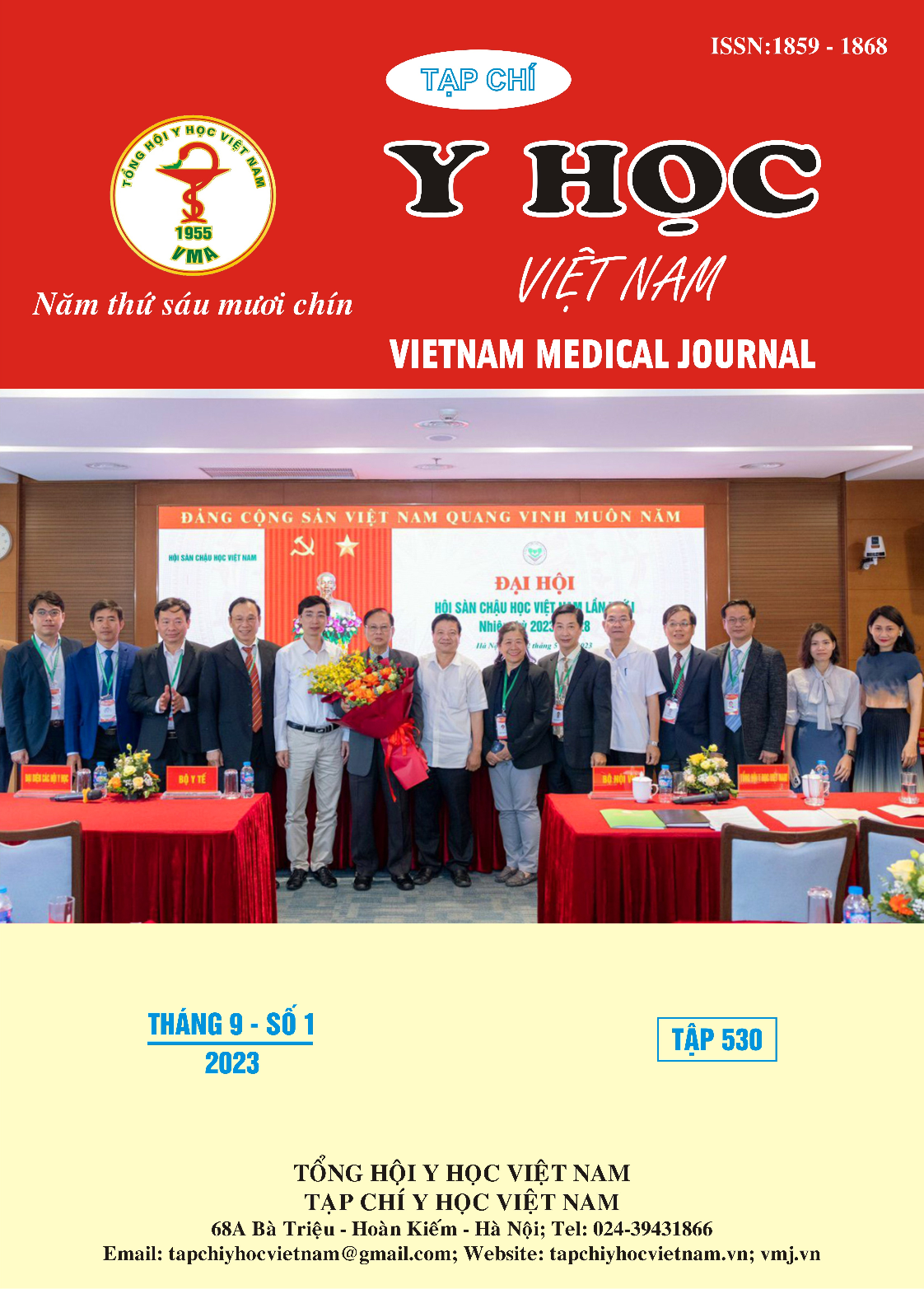CLINICAL FEATURES OF PATIENTS WITH URINARY TRACT INFECTIONS CAUSED BY MULTIDRUG-RESISTANT BACTERIA AT GIA DINH PEOPLE'S HOSPITAL
Main Article Content
Abstract
Objective: Describe clinical features of patients with urinary tract infections caused by multidrug-resistant bacteria at Gia Dinh People's Hospital. Subject and methods: We retrospectively assessed patients who diagnosed with urinary tract infections resistant to three groups of antibiotics treated at the Urology Department of Gia Dinh People's Hospital in the period from January 2019 to February 2021. Results: In a total of 189 patients with urinary tract infections, the mean age was 62.5 ± 17.5 years old, the age group with a high percentage in the study was 50 - 69 years old. The proportions of men and women in the study were similar. The most common clinical symptoms were hip pain (52.4%) and fever (36.5%). The rate of complicated urinary tract infections accounted for 91.5%. Common clinical forms are cystitis (14.3%), urethritis (13.2%), male gonads (52.1%) and pyelonephritis (43.9%). . Structural abnormalities of the urinary tract were mainly urinary obstruction due to stones (44%). Most patients reported mild urinary tract infections with 49.7%, followed by 46.0% with moderate severity. The highest risk of urinary tract infections is health care-related infections, accounting for 48.1%. Conclusion: The disease is common in men and women, mainly between the ages of 50 and 69 years. Common clinical symptoms are hip pain and fever. Common clinical forms are cystitis, urethritis, male gonads and pyelonephritis
Article Details
Keywords
Urinary tract infections, clinical features.
References
2. Jean SS, Hsueh PR. Distribution of ESBLs, AmpC β-lactamases and carbapenemases among Enterobacteriaceae isolates causing intra-abdominal and urinary tract infections in the Asia-Pacific region during 2008-14: results from the Study for Monitoring Antimicrobial Resistance Trends (SMART). J Antimicrob Chemother. 2017;72(1):166-171.
3. Nguyễn Thế Hưng. Đánh giá chẩn đoán và điều trị nhiễm khuẩn đường tiết niệu phức tạp. Luận án chuyên khoa cấp II. Đại học Y Dược Thành phố Hồ Chí Minh; 2016.
4. Trịnh Đăng Khoa. Đánh giá chẩn đoán và điều trị nhiễm khuẩn đường tiết niệu ở bệnh nhân đái tháo đường. Luận văn tốt nghiệp chuyên khoa cấp II. Đại học Y Dược Tp. Hồ Chí Minh; 2017.
5. Stickler DJ. Clinical complications of urinary catheters caused by crystalline biofilms: something needs to be done. J Intern Med. 2014; 276(2):120-129.
6. Vigil HR, Hickling RD. Urinary tract infection in the neurogenic bladder. Translational andrology and urology. 2016; 5(1):72.
7. Aswani SM, Chandrashekar U, Shivashankara K, Pruthvi B. Clinical profile of urinary tract infections in diabetics and non-diabetics. Australas Med J. 2014; 7(1):29-34.
8. Mamun Mahmud H, Qureshi S, Kumar D, Farman S. Pyuric diabetic patients: A tertiary centre experience from Karachi. Pak J Med Sci. 2014; 30(1):77-80.
9. Tenney J, Hudson N, Alnifaidy H, Li JTC, et al. Risk factors for aquiring multidrug-resistant organisms in urinary tract infections: A systematic literature review. Saudi Pharm J. 2018; 26(5):678-684.


